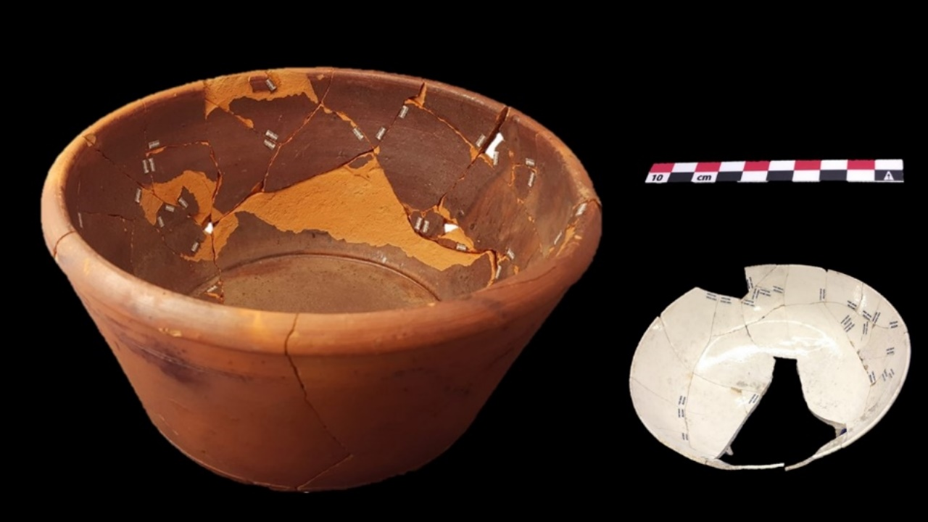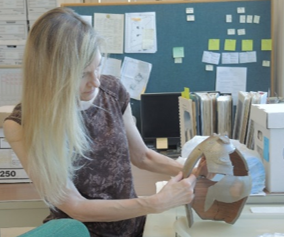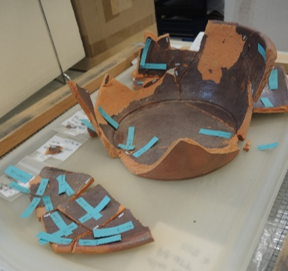
These vessels currently being “mended” by the Fairfax County Park Authority (FCPA) were recovered from a slave quarters site dating between ca. 1760 and 1820.
When archaeologists excavate a site, they rarely find entire vessels. Usually, items such as ceramics or glass bottles have been broken, and often, only a small number of pieces from one vessel are recovered. Occasionally, archaeologists in the field notice pieces that fit back together or “mend.” However, most often it is the lab that does the heavy lifting. Lab analysts catalog each piece, noting characteristics such as size, color, shape and decorations. When this information is entered into a relational database, archaeologists can generate queries to find similar pieces found across the site.
 FCPA volunteer Denise McKittrick has taken on the Herculean task of labeling fragments from this slave quarters site to indicate the context in which they were found. Context is the most important aspect of archaeology, and the labels ensure that this critical information is retained. McKittrick looks for pieces that mend and meticulously puts them back together. The process of mending must be reversible and not lead to the degradation of the pieces. Instead of regular glue, archaeologists use paraloid B-72, a thermoplastic resin that can be thinned and removed with acetone.
FCPA volunteer Denise McKittrick has taken on the Herculean task of labeling fragments from this slave quarters site to indicate the context in which they were found. Context is the most important aspect of archaeology, and the labels ensure that this critical information is retained. McKittrick looks for pieces that mend and meticulously puts them back together. The process of mending must be reversible and not lead to the degradation of the pieces. Instead of regular glue, archaeologists use paraloid B-72, a thermoplastic resin that can be thinned and removed with acetone.
Archaeologists record these mends in the database. This allows them to see if all the parts of one vessel were found near each other or if they were spread across the site. The information provides insight into how the site formed -- whether it was quick or occurred over a long period of time.
 Archaeologists also rely on raw numbers of artifacts to analyze a site. Statistics can show how much of one type of artifact was found. However, after mending, the archaeologist has a better understanding of what types of vessels, and how many, were found where. This helps them understand what different activities were happening on site and where. The information from the mends seen in these photographs helps to recreate how the enslaved persons at the site adapted the landscape to their daily needs and activities.
Archaeologists also rely on raw numbers of artifacts to analyze a site. Statistics can show how much of one type of artifact was found. However, after mending, the archaeologist has a better understanding of what types of vessels, and how many, were found where. This helps them understand what different activities were happening on site and where. The information from the mends seen in these photographs helps to recreate how the enslaved persons at the site adapted the landscape to their daily needs and activities.

